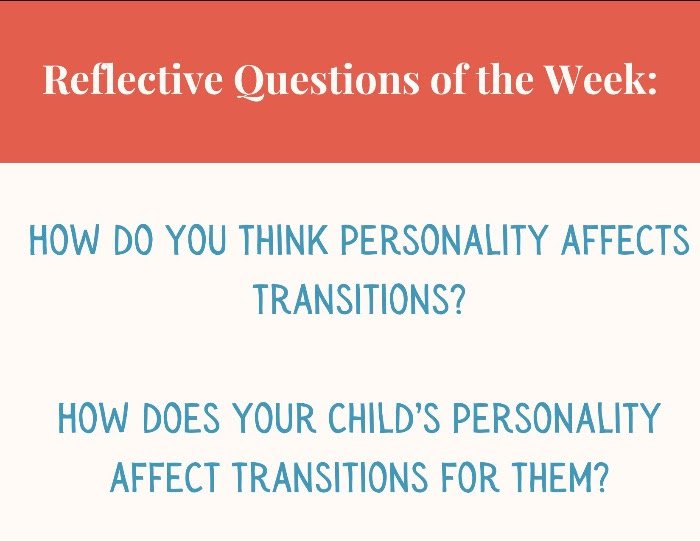Aspects of who we are, both adults and children, can affect how we navigate these transitions. One significant factor is temperament. Temperament can be described as “…a combination of tendencies that make up an individual’s natural way of relating to people, things, and events.” (PITC@WestEd). These tendencies can be categorized as:
Reactivity – This refers to how strongly children react to events like exciting occurrences or not getting their way. Reactive children tend to feel things intensely.
Self-regulation – This involves how well children can control their behavior and emotions. It also includes their ability to focus and persist in tasks.
Sociability – This indicates how comfortable children are when meeting new people.
Adaptability – This describes how quickly children can adjust to new situations or changes in their environment.
These traits apply to adults as well. How we recognize and respond to these tendencies in our children and ourselves can significantly influence how smoothly or challenging transitions may be.
Play & Learn at Home
Here are some tips:
-Use familiar objects
-Let your child be a part of the transition
-Ease into new activities
-Notice and comment when you child has made a transition
-Give your child a sense of control (for example: “Would you like to kick the ball one more time?”
-Offer your child a variety of experiences
-Be sensitive to your child’s signals
-Let your child know about new situations ahead of time
-Be sure to find some one-on-one quiet time.
Resources we love:
transitions with young children
https://papromiseforchildren.com/featured-articles/transitions-with-young-children/#:~:text=Child's%20temperament%3A%20Children%20feel%20and,is%20more%20resistant%20to%20change.
about temperament
https://www.zerotothree.org/resource/temperament-intensity-of-reaction/#:~:text=For%20many%20children%2C%20intensity%20isn,%2C%20when%20they're%20not.
introduction to temperament
https://www.ecmhc.org/documents/CECMHC_IT3_Booklet_Infant.pdf

